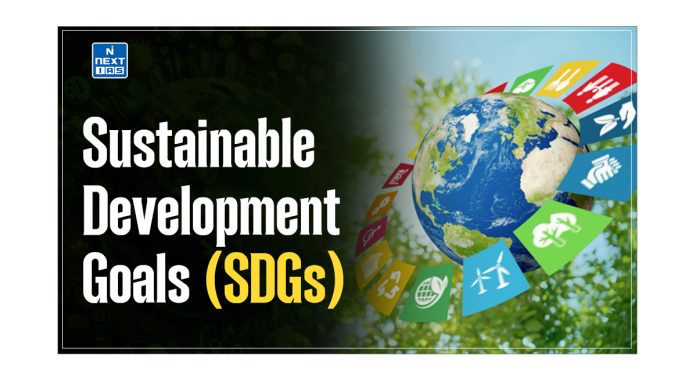When a country requests it, a credit rating agency assesses its economic and political environment to assign a rating. For developing nations seeking access to international bond markets, obtaining a favorable sovereign credit rating is typically crucial.
Key Points to Remember about Sovereign Credit Ratings
- They independently assess the creditworthiness of a country or sovereign entity.
- Investors utilize these ratings to evaluate the risk level associated with a country’s bonds. For instance: Standard & Poor’s designates a rating of BBB- or higher as an investment grade, while grades of BB+ or lower are considered speculative or “junk” grades.
Understanding Sovereign Credit Ratings
- Apart from issuing bonds in external debt markets, countries often seek sovereign credit ratings to attract foreign direct investment (FDI).
- Ratings from prominent credit rating agencies, such as Standard & Poor’s, Moody’s, and Fitch Ratings, are sought after to inspire investor confidence.
- Investors rely on sovereign credit ratings to assess the riskiness of a country’s bonds.
- Sovereign credit risk, which is reflected in these ratings, signifies the likelihood that a government might be incapable or unwilling to fulfill its debt obligations in the future.
- Several factors contribute to determining the level of risk associated with investing in a specific country or region. These factors include the debt service ratio, growth in domestic money supply, import ratio, and variance of export revenue.
Determinants of Sovereign Credit Ratings
Sovereign credit ratings are determined by credit rating agencies using a combination of qualitative and quantitative techniques. These factors include:
- Per capita income: It measures the average income earned by individuals in a specific area. A higher per capita income indicates a larger tax base for the government, increasing its ability to repay debts.
- GDP growth: It represents the percentage increase in a country’s GDP over time. Strong GDP growth means the country can meet its debt obligations due to higher tax revenues. Conversely, negative growth suggests an economic contraction and potential difficulties in honoring debt obligations.
- Rate of inflation: Inflation impacts a country’s ability to finance its debt. High inflation rates indicate financial structural problems and can lead to political instability as public dissatisfaction grows.
- External debt: Countries heavily reliant on external debt face a higher risk of default, affecting their access to international funding. If a country’s foreign currency debts exceed its foreign currency income from exports, the burden of debt increases.
- Economic development: Credit rating agencies consider a country’s level of development when assessing its sovereign credit rating. Developed nations are generally perceived as less likely to default compared to developing countries.
- History of defaults: Countries with a record of defaulting on debt obligations are viewed as having a higher sovereign credit risk. Such countries receive lower ratings, making them less attractive to low-risk investors.
Economic Survey’s Stance on Sovereign Credit Ratings (SCRs) in India
- India has consistently received lower ratings compared to its performance on various parameters during the period of 2000-2020.
- India stands out as an outlier in several areas, including GDP growth rate, inflation, general government debt, political stability, rule of law, control of corruption, investor protection, ease of doing business, and sovereign default history.
- India’s ability to pay is supported by its low foreign currency-denominated debt and substantial foreign exchange reserves, which can cover short-term private sector debt as well as the entire stock of sovereign and non-sovereign external debt.
- The fiscal policy of India should prioritize growth and development rather than being restrained by biased and subjective sovereign credit ratings.
- The Economic Survey recommends that developing economies work together to address the inherent biases and subjectivity in sovereign credit rating methodologies to prevent the exacerbation of future crises.
Criticism of Credit Rating Agencies
Credit rating agencies have faced criticism for various aspects of their operations, particularly in relation to sovereign credit ratings. Here are some key criticisms:
| Reactivity and Bias: Sovereign credit ratings are often seen as reactive, especially for emerging market economies, with a higher likelihood of being downgraded compared to developed economies. There is a perception that credit rating agencies assign higher ratings to developed countries regardless of their macroeconomic situation, potentially overlooking underlying risks. |
| Unequal Treatment: Certain credit rating agencies, such as S&P and Fitch, have been criticized for finding it more challenging to upgrade African countries compared to other developing nations, even when there is a clear improvement in their ability and willingness to repay debts. |
| Regional and Cultural Influences: The home countries of credit rating agencies, as well as countries with linguistic and cultural similarities, have been observed to receive higher ratings that are not necessarily justified by their political and economic fundamentals. This suggests that there may be regional or cultural influences that influence the rating outcomes. |
| Conflict of Interest: One of the major criticisms revolves around the compensation arrangement between credit rating agencies and the companies whose securities they rate. As agencies are paid by the issuers, there is a perceived conflict of interest. Companies benefit from higher ratings, which can lead to favorable market perceptions and lower borrowing costs. This compensation structure raises concerns about the independence and objectivity of credit ratings. |




